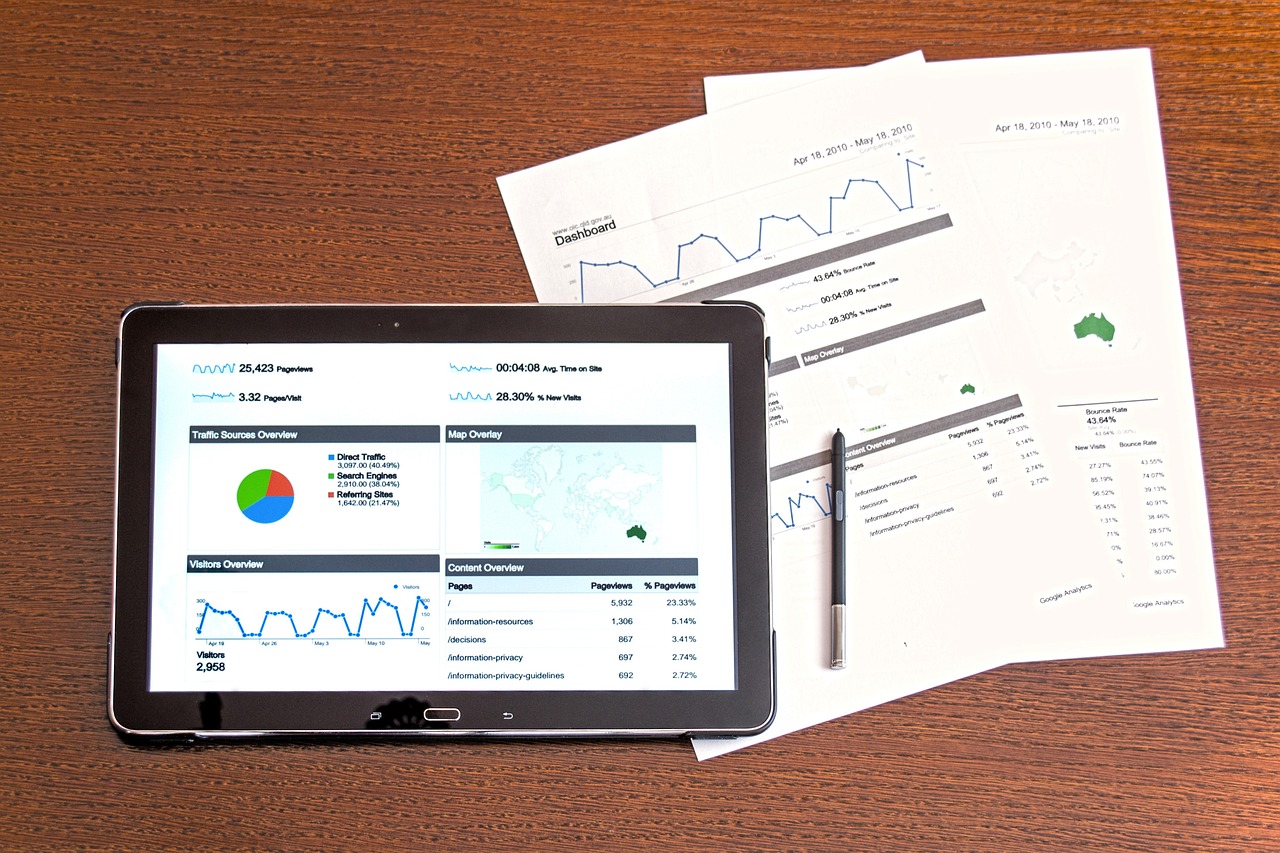How to Perfect Your Data Analytics Resume
Try Aihirely for
Smarter Interview Prep
Experience real-time AI support tailored to your Resume.
Boost your confidence and ace every question with
AI Mock Interview.

Image Source: Pixabay
A well-crafted data analytics resume is essential to stand out in today’s competitive job market. Recruiters seek resumes that effectively highlight your skills, tools, and achievements. It’s crucial to present your expertise in a way that captures their attention. Customizing your data analytics resume to align with specific job descriptions significantly boosts your chances of being noticed. By showcasing your experience in line with employer expectations, you can position yourself as the perfect candidate.
Key Takeaways
-
Keep your resume neat and professional. Use simple fonts and skip fancy designs so it works with job application systems.
-
Begin with a strong summary about your skills and goals. This helps grab the recruiter’s attention quickly.
-
Change your resume for each job you apply to. Add words from the job post to match your skills with what they want.
-
Use numbers to show your achievements. Numbers make your work clear and prove how much you helped.
-
Update your resume often with new skills and experiences. A current resume keeps you ready for new chances.

Image Source: Pixabay
Structuring Your Data Analytics Resume
Clean and Professional Layout
Use an ATS-friendly format.
Your data analytics resume must pass through Applicant Tracking Systems (ATS) before reaching a recruiter. To ensure this, use a simple format without complex graphics or tables. Stick to standard fonts like Arial or Calibri. Avoid using images or symbols that ATS software might not recognize. Save your resume as a PDF or Word document, as these formats are widely accepted by ATS tools.
Maintain consistent fonts, spacing, and headers.
A clean design makes your resume easier to read. Use the same font style and size for all sections. Keep spacing uniform to create a balanced look. Use clear headers like “Skills” or “Experience” to organize your content. Consistency in formatting shows attention to detail, a skill valued in data analytics roles.
Strategic Section Organization
Start with a strong summary or objective.
Begin your resume with a compelling summary or objective. This section should briefly describe your expertise and career goals. For example, “Data analyst with 3+ years of experience in SQL and Tableau, seeking to drive data-driven decisions in a fast-paced environment.” A strong opening grabs the recruiter’s attention immediately.
Follow with skills, experience, and education sections.
Organize your resume to highlight your strengths. After the summary, list your technical and analytical skills. Follow this with your professional experience, detailing your roles and achievements. Conclude with your educational background, including degrees and certifications. This logical flow helps recruiters quickly find the information they need.
Concise and Focused Content
Limit your resume to one or two pages.
Recruiters spend only a few seconds scanning each resume. Keep yours brief and to the point. Limit it to one page if you have less experience or two pages if you have extensive experience. Avoid unnecessary details that do not align with the job description.
Highlight the most relevant and recent experiences.
Focus on your most recent roles and achievements. Tailor your content to match the job you are applying for. For instance, if the role emphasizes Python and Tableau, prioritize projects or tasks where you used these tools. This approach ensures your resume aligns with the recruiter’s expectations.
Customizing Your Data Analytics Resume
Align with Job Descriptions
Incorporate keywords from the job posting.
Tailoring your data analytics resume to match the job description is essential. Start by carefully reviewing the job posting. Identify specific keywords, such as “data visualization,” “SQL,” or “predictive modeling.” Incorporate these terms naturally into your resume. For example, if the job emphasizes Tableau, mention your experience creating dashboards with Tableau. This approach ensures your resume aligns with the recruiter’s expectations and passes ATS filters.
Emphasize skills and tools listed in the requirements.
Highlight the skills and tools mentioned in the job description. If the role requires Python, R, or Excel, showcase your proficiency with these tools. Use bullet points to make these skills stand out. For instance, you could write, “Developed predictive models using Python to forecast sales trends.” This strategy demonstrates that you possess the technical expertise the employer seeks.
Showcase Relevant Experience
Highlight data analytics roles and projects.
Focus on your most relevant data analytics roles and projects. Describe your responsibilities and the impact of your work. For example, mention projects where you analyzed large datasets or created actionable insights. If you lack professional experience, include academic or personal projects that demonstrate your skills.
Quantify achievements with metrics (e.g., ‘Improved efficiency by 20%’).
Quantify your accomplishments to show the value you bring. Use metrics to provide context. For example, instead of saying, “Analyzed customer data,” write, “Analyzed customer data to identify trends, increasing retention rates by 15%.” Numbers make your achievements more tangible and impactful.
Highlight Technical Proficiency
List tools like SQL, Python, R, Tableau, and Excel.
Your technical skills are a critical part of your data analytics resume. Create a dedicated “Skills” section to list tools like SQL, Python, R, Tableau, and Excel. Use concise phrases, such as “Proficient in SQL for database management” or “Experienced in Tableau for data visualization.” This makes it easy for recruiters to see your expertise.
Include certifications (e.g., Google Data Analytics, AWS).
Certifications add credibility to your resume. Include relevant certifications, such as the Google Data Analytics Professional Certificate or AWS Certified Data Analytics. These credentials demonstrate your commitment to professional growth and validate your technical knowledge.

Image Source: Pixabay
Demonstrating Achievements and Results
Action-Oriented Descriptions
Use strong action verbs (e.g., ‘Analyzed,’ ‘Developed’).
When describing your experience, use action verbs to make your accomplishments stand out. Words like “analyzed,” “developed,” “optimized,” or “designed” show what you actively contributed. For example, instead of saying, “Worked on data visualization,” you could say, “Developed interactive dashboards to track key performance indicators.” This approach highlights your role and makes your data analytics resume more engaging.
Avoid generic phrases like ‘Responsible for.’
Generic phrases weaken your resume. Avoid saying, “Responsible for creating reports.” Instead, describe what you achieved. For instance, “Created automated reports that reduced manual processing time by 30%.” This method shows the impact of your work and demonstrates your value to potential employers.
Quantify Achievements
Use metrics to show impact (e.g., ‘Increased revenue by $50K’).
Numbers make your achievements more concrete. Recruiters want to see the results of your efforts. For example, instead of writing, “Improved data accuracy,” say, “Improved data accuracy by 25%, leading to better decision-making.” Metrics provide a clear picture of your contributions and help your resume stand out.
Highlight measurable outcomes of your work.
Focus on outcomes that showcase your skills. For instance, “Streamlined data collection processes, reducing analysis time by 40%.” Measurable results demonstrate your ability to deliver value and solve problems effectively.
Include Key Projects
Add a ‘Projects’ section for personal or academic work.
If you have limited professional experience, include a “Projects” section. List personal or academic projects that demonstrate your skills. For example, “Built a predictive model using Python to forecast sales trends.” This section allows you to showcase your abilities even if you are new to the field.
Focus on projects that demonstrate relevant skills.
Choose projects that align with the job description. Highlight those involving tools like SQL, Tableau, or Python. For example, “Designed a Tableau dashboard to visualize customer behavior, improving marketing strategies.” Relevant projects show you have the skills needed for the role.
Additional Tips for a Standout Data Analytics Resume
Proofread and Edit
Eliminate typos, grammar errors, and formatting issues.
Errors in your resume can leave a negative impression on recruiters. Carefully review your data analytics resume to catch typos, grammar mistakes, and formatting inconsistencies. Pay attention to details like punctuation, alignment, and spacing. A polished resume reflects your professionalism and attention to detail.
Use tools like Grammarly or seek feedback from others.
Leverage tools like Grammarly to identify and correct errors. These tools can help you refine your writing and ensure clarity. Additionally, ask a trusted friend, mentor, or colleague to review your resume. A fresh perspective can uncover mistakes you might have missed and provide valuable suggestions for improvement.
Regular Updates
Keep your resume current with new skills and experiences.
Your resume should evolve as your career progresses. Regularly update it to include new skills, certifications, and experiences. For example, if you recently completed a course on Tableau or worked on a new project, add these to your resume. Keeping it current ensures you’re always ready to apply for opportunities.
Tailor it for each job application.
A generic resume won’t stand out. Customize your resume for each job application by aligning it with the job description. Highlight the skills, tools, and experiences most relevant to the role. Tailoring your resume shows recruiters that you’ve taken the time to understand their needs.
Add a Portfolio Link
Include links to GitHub, Tableau Public, or a personal website.
A portfolio can showcase your work beyond what’s listed on your resume. Add links to platforms like GitHub, Tableau Public, or your personal website. These links allow recruiters to explore your projects, dashboards, or code samples, giving them a deeper understanding of your capabilities.
Showcase dashboards, code, or case studies.
Your portfolio should highlight your best work. Include examples like interactive dashboards, Python scripts, or case studies that demonstrate your problem-solving skills. For instance, a Tableau dashboard analyzing sales trends can show your ability to visualize data effectively. A strong portfolio complements your resume and strengthens your application.
A strong data analytics resume can help you secure your dream role. Focus on tailoring it to match job descriptions. Highlight your skills, tools, and achievements to show your value. Regularly update your resume to reflect new experiences and certifications. Proofread carefully to ensure it looks polished and professional. Start revising your resume today. Taking these steps will help you stand out to recruiters and increase your chances of landing interviews.
FAQ
What is the best format for a data analytics resume?
Use an ATS-friendly format. Stick to simple fonts like Arial or Calibri. Avoid graphics, images, or symbols. Save your resume as a PDF or Word document. This ensures compatibility with Applicant Tracking Systems and makes your resume easy to read.
How can I showcase my technical skills effectively?
Create a dedicated “Skills” section. List tools like SQL, Python, R, Tableau, and Excel. Use specific phrases like “Proficient in SQL for database management.” Highlight certifications such as Google Data Analytics or AWS to validate your expertise.
Should I include personal projects on my resume?
Yes, especially if you lack professional experience. Add a “Projects” section. Focus on projects that demonstrate relevant skills. For example, “Built a Tableau dashboard to analyze sales trends.” Personal projects show initiative and technical ability.
How often should I update my resume?
Update your resume regularly. Add new skills, certifications, or experiences as they occur. Tailor your resume for each job application. Keeping it current ensures you’re always ready to apply for opportunities.
Do I need a portfolio for data analytics roles?
A portfolio strengthens your application. Include links to GitHub, Tableau Public, or a personal website. Showcase dashboards, code, or case studies. For example, an interactive Tableau dashboard can highlight your data visualization skills.
Tip: A strong portfolio complements your resume and gives recruiters a deeper understanding of your abilities.
